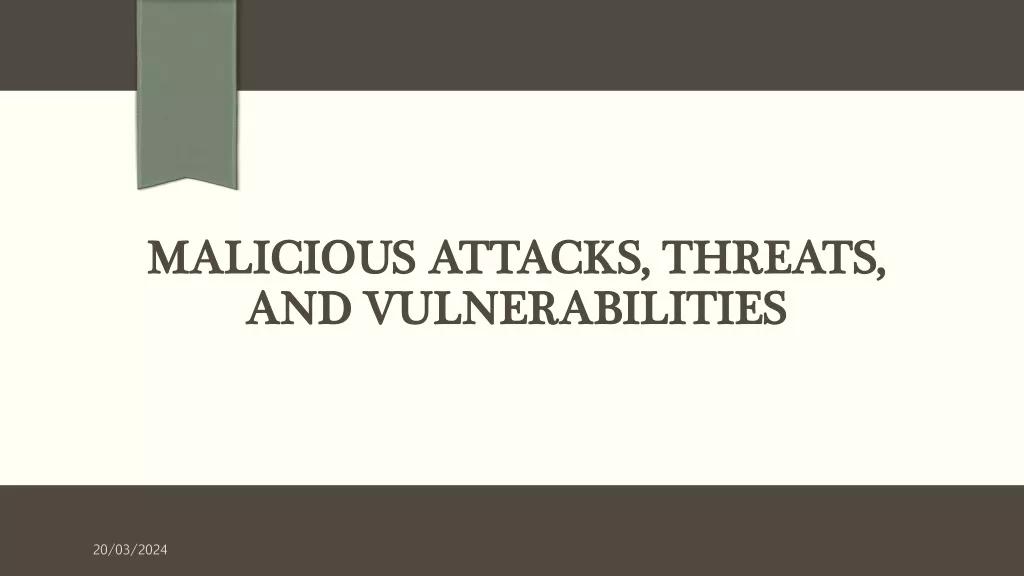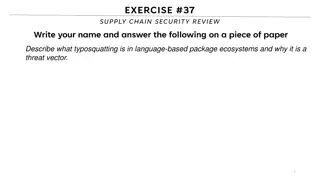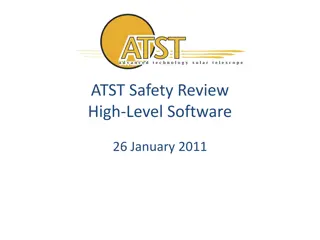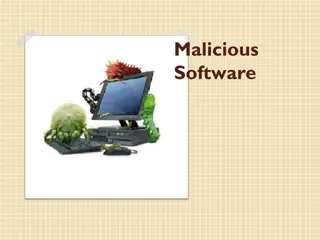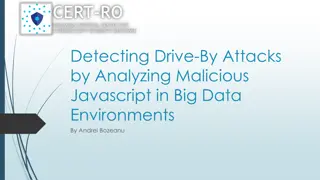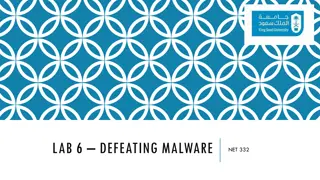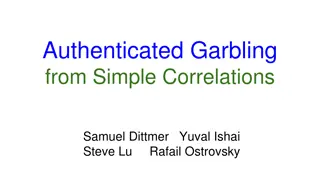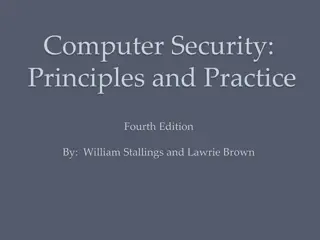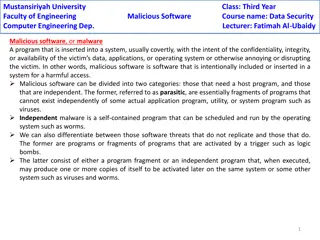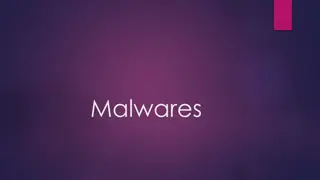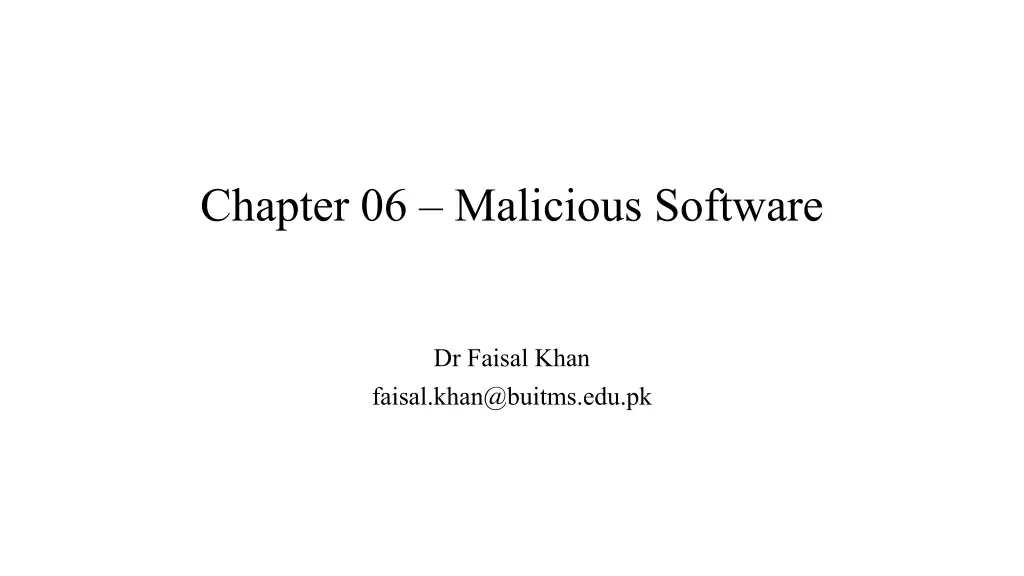
Understanding Malicious Software and Cyber Threats
Explore the world of malicious software, including viruses, worms, and Trojans, along with advanced threats like APT. Learn about key terms such as adware, rootkits, and keyloggers that pose risks to cybersecurity. Stay informed to protect your systems from cybercrime.
Download Presentation

Please find below an Image/Link to download the presentation.
The content on the website is provided AS IS for your information and personal use only. It may not be sold, licensed, or shared on other websites without obtaining consent from the author. If you encounter any issues during the download, it is possible that the publisher has removed the file from their server.
You are allowed to download the files provided on this website for personal or commercial use, subject to the condition that they are used lawfully. All files are the property of their respective owners.
The content on the website is provided AS IS for your information and personal use only. It may not be sold, licensed, or shared on other websites without obtaining consent from the author.
E N D
Presentation Transcript
Chapter 06 Malicious Software Dr Faisal Khan faisal.khan@buitms.edu.pk
Malicious Software (Malware) A program that is inserted into a system, usually covertly, with the intent of compromising the confidentiality, integrity, or availability of the victim s data, applications, or operating system or otherwise annoying or disrupting the victim.
Viruses, Worms, and Trojan Horses Virus - code that copies itself into other programs (usually riding on email messages or attached documents (e.g., macro viruses). Worm - a program that replicates itself across the network (e.g., Saphire worm) Payload - harmful things it does, after it has had time to spread. Trojan Horse - instructions in an otherwise good program that cause bad things to happen (sending your data or password to an attacker over the net). Logic Bomb - malicious code that activates on an event (e.g., date). Trap Door (or Back Door) - undocumented entry point written into code for debugging that can allow unwanted users. Bot (robot) - a compromised host that is controlled remotely. Bot Net (botnet) - many bots controlled by the same organization.
Terminologies for Malicious Software Terminologies for Malicious Software Advanced Persistent Threat (APT) Cybercrime directed at business and political targets, using a wide variety of intrusion technologies and malware, applied persistently and effectively to specific targets over an extended period, often attributed to state-sponsored organizations. Adware Advertising that is integrated into software. It can result in pop-up ads or redirection of a browser to a commercial site. Attack kit Set of tools for generating new malware automatically using a variety of supplied propagation and payload mechanisms. Auto-rooter Malicious hacker tools used to break into new machines remotely. Downloaders Code that installs other items on a machine that is under attack. It is normally included in the malware code first inserted on to a compromised system to then import a larger malware package. Drive-by-download An attack using code in a compromised Web site that exploits a browser vulnerability to attack a client system when the site is viewed. Exploits Code specific to a single vulnerability or set of vulnerabilities.
Terminologies for Malicious Software contd.. Terminologies for Malicious Software contd.. Flooders (DoS client) Used to generate a large volume of data to attack networked computer systems, by carrying out some form of denial-of-service (DoS) attack. Keyloggers Captures keystrokes on a compromised system. Macro virus A type of virus that uses macro or scripting code, typically embedded in a document, and triggered when the document is viewed or edited, to run and replicate itself into other such documents. Mobile code Software (e.g., script, macro, etc) that can be shipped unchanged to a heterogeneous collection of platforms and execute with identical semantics. Rootkit Set of hacker tools used after attacker has broken into a computer system and gained root- level access. Spammer programs Used to send large volumes of unwanted e-mail. Spyware Software that collects information from a computer and transmits it to another system by monitoring keystrokes, screen data, and/or network traffic; or by scanning files on the system for sensitive information.
Typical Virus Lifetime Dormant phase: The virus is idle. The virus will eventually be activated by some event, such as a date, the presence of another program or file, or the capacity of the disk exceeding some limit. Not all viruses have this stage. Propagation phase: The virus places a copy of itself into other programs or into certain system areas on the disk. The copy may not be identical to the propagating version; viruses often morph to evade detection. Each infected program will now contain a clone of the virus, which will itself enter a propa- gation phase. Triggering phase: The virus is activated to perform the function for which it was intended. As with the dormant phase, the triggering phase can be caused by a variety of system events, including a count of the number of times that this copy of the virus has made copies of itself. Execution phase: The function is performed. The function may be harm- less, such as a message on the screen, or damaging, such as the destruction of programs and data files.
State-of-the-art in worm technology Multiplatform: Newer worms are not limited to Windows machines but can attack a variety of platforms, especially the popular varieties of UNIX; or exploit macro or scripting languages supported in popular document types. Multi-exploit:New worms penetrate systems in a variety of ways, using exploits against Web servers, browsers, e-mail, file sharing, and other network-based applications; or via shared media. Ultrafast spreading: Exploit various techniques to optimize the rate of spread of a worm to maximize its likelihood of locating as many vulnerable machines as possible in a short time period. Polymorphic: To evade detection, skip past filters, and foil real-time analysis, worms adopt virus polymorphic techniques. Each copy of the worm has new code generated on the fly using functionally equivalent instructions and encryption techniques. Metamorphic: In addition to changing their appearance, metamorphic worms have a repertoire of behavior patterns that are unleashed at different stages of propagation. Transport vehicles: Because worms can rapidly compromise a large number of systems, they are ideal for spreading a wide variety of malicious payloads, such as distributed denial-of-service bots, rootkits, spam e- mail generators, and spyware. Zero-day exploit: To achieve maximum surprise and distribution, a worm should exploit an unknown vulnerability that is only discovered by the general network community when the worm is launched.
Phishing and Identity Theft Used to capture a user s login and password credentials is to include a URL in a spam e-mail that links to a fake Web site controlled by the attacker, but which mimics the login page of some banking, gaming, or similar site. A more dangerous variant of this is the spear-phishing attack. This again is an e-mail claiming to be from a trusted source. Recipients are carefully researched by the attacker
From: insurance\@fdic.gov actually from 118.223.217.179 = ?@hanaro.com (Seoul, KR) To: xxx-ece.gatech.edu Subject: FDIC Insurance To whom it may concern, In cooperation with the Department Of Homeland Security, Federal, State and Local Governments your account has been denied insurance from the Federal Deposit Insurance Corporation due to suspected violations of the Patriot Act. While we have only a limited amount of evidence gathered on your account at this time it is enough to suspect that currency violations may have occurred in your account and due to this activity we have withdrawn Federal Deposit Insurance on your account until we verify that your account has not been used in a violation of the Patriot Act. As a result Department Of Homeland Security Director Tom Ridge has advised the Federal Deposit Insurance Corporation to suspend all deposit insurance on your account until such time as we can verify your identity and your account information. Please verify through our IDVerify below. This information will be checked against a federal government database for identity verification. This only takes up to a minute and when we haveverified your identity you will be notified of said verification and all suspensions of insurance on your account will be lifted. http://fdic.gov Failure to use IDVerify below will cause all insurance for your account to be terminated and all records of your account history will be sent to the Federal Bureau of Investigation in Washington D.C. for analysis and verification. Failure to provide proper identity may also result in a visit from Local, State or Federal Government or Homeland Security Officials. Donald E. Powell Chairman Emeritus FDIC link goes to: <http://haptered.com/fe45q2/index.php?027ed7c0a5cebf916dd3a0d05>
Countermeasures Prevention: policy, awareness, vulnerability mitigation, and threat mitigation. If preventions fails then: Detection: Once the infection has occurred, determine that it has occurred and locate the malware. Identification: Once detection has been achieved, identify the specific malware that has infected the system. Removal: Once the specific malware has been identified, remove all traces of malware virus from all infected systems so that it cannot spread further.
Effective Countermeasures Generality: The approach taken should be able to handle a wide variety of attacks. Timeliness: The approach should respond quickly so as to limit the number of infected programs or systems and the consequent activity. Resiliency: The approach should be resistant to evasion techniques employed by attackers to hide the presence of their malware. Minimal denial-of-service costs: The approach should result in minimal reduction in capacity or service due to the actions of the countermeasure software, and should not significantly disrupt normal operation. Transparency: The countermeasure software and devices should not require modification to existing (legacy) OSs, application software, and hardware. Global and local coverage: The approach should be able to deal with attack sources both from outside and inside the enterprise network.
Effective Countermeasures contd.. CPU emulator: A software-based virtual computer. Suspicious instructions in an executable file are interpreted by the emulator rather than executed on the underlying processor. Honeypot: A cybersecurity mechanism that uses a manufactured attack target to lure cybercriminals away from legitimate targets. Virus signature scanner: A module that scans the target code looking for known malware signatures. Emulation control module: Controls the execution of the target code. Use IDS and Firewalls (to be discussed in later lectures)

